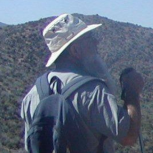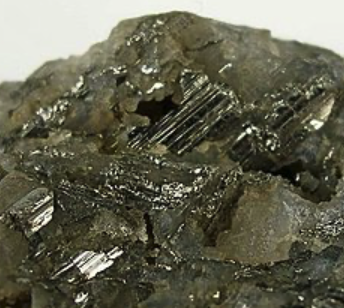-
Posts
132 -
Joined
-
Last visited
Content Type
Forums
Detector Prospector Home
Detector Database
Downloads
Everything posted by oldmancoyote1
-

What Is This? (sorry Steve)
oldmancoyote1 replied to Erik Oostra's topic in Detector Prospector Forum
Fire brick. -

Black Rock Covered In Sparkles
oldmancoyote1 replied to Carol Reynolds's topic in Rocks, Minerals, Gems & Geology
It's still way to out of focus. The tiny details are telling. -

Cleaning Gold Specimens - Step By Step Methods
oldmancoyote1 replied to Glenn in CO's topic in Detector Prospector Forum
Someone described nitric acid as less aggressive than muriatic acid (HCl). I would never use nitric acid except under professional supervision in a hood. I have use HCl at home since high school. I carried it around in my pocket. While its vapors will corrode nearby metals etc., it is not a powerful oxidizer like nitric acid which I regard as extremely dangerous. Perhaps the commentator was referring to its action on minerals as being less aggressive not to safety issues. I think it is best to avoid any misunderstanding by mentioning nitric acid is a dangerous material. -
A very useful recent post and comments on mining claims left me with the impression that the public can be excluded from mining claims by the holder. It's quite possible that I misunderstood what was written. Perhaps others were left with some doubt as well. The BLM pamphlet "Mining Claims and Sites on Federal and State Lands" reads: The Public has the conditional right to cross mining claims or sites for recreational or other purposes and to access federal lands beyond the claim boundaries. Technically, my post belongs in the previous mentioned post, but it would be buried and missed by many. I hope Steve will permit it to exist as an independent post because of its importance to us all.
-

Online Claim Research Questions
oldmancoyote1 replied to GotAU?'s topic in Detector Prospector Forum
An adjacent property is 50 50. I strongly suspect that my area of interest is also 50 50. If it is, I suppose I can not metal detect there. Any info on wether I can metal detect 50 50 land. -

Online Claim Research Questions
oldmancoyote1 replied to GotAU?'s topic in Detector Prospector Forum
I have used The Diggings for active claims. Taking The Diggings info to the County Recorder's office I have retrieved claim filing documents. I have seen some indication elsewhere that there are patented claims in the area (Greaterville AZ), so I got a list of patented claims (Excel file) from the County Assessor's Office. Yet there is only one patented claim shown in my target area. The area I am interested in probably is patented. It's a prime location. I'd very much like to detect this area, but I'm stymied for lack of reliable information. Anyone got a suggestion? -
Folks here have referred to carrying guns for self defense. In Arizona it is forbidden to blame the "victim" for a crime. As strange as it may seem, claiming self defense is no longer an acceptable practice as it blames the "victim". You run considerable risk carrying a gun. I write from painful personal experience. I was assaulted in a parking lot. I fought back and hurt the guy. He lied to the police claiming I was a violent homeless man because I wear a beard and was wearing a ratty old coat. I was charged with felony assault. Since I could not claim self defense, I was compelled to plead no contest to felony assault. I had no other option. I carry bear spray, and in potential confrontations I launch an audio recording app as soon as the situation develops. With bear spray if I were charged, it would be for assault not for murder. While I have spoken of the law, I am not a lawyer, and it is always foolish to take legal advice from any forum.
-

Help Me Identify Type Of This Rock
oldmancoyote1 replied to Idirss's topic in Rocks, Minerals, Gems & Geology
I still don't know what it is. I do understand why someone might think it is a meteorite. The convex side looks like it might have been partially melted by passing through the atmosphere at high speed, and the back side looks like it might have been slightly melted by hot turbulent gasses behind the meteorite. However it does not look like any of the common types of meteorites that I am aware of. I don't even recognize the orange material on the back side. Show it to a petrologist or a meteorite specialist at a university. They might have an idea. -

Localizing Desert Hillside Detectable Gold
oldmancoyote1 replied to Skookum's topic in Detector Prospector Forum
His name is Ray Mills. -

Help Me Identify Type Of This Rock
oldmancoyote1 replied to Idirss's topic in Rocks, Minerals, Gems & Geology
That's one weird rock. Where was it found? Both what region and describe the actual location. -

Detecting Burn Scars For Nuggets
oldmancoyote1 replied to oldmancoyote1's topic in Detector Prospector Forum
No. We work in higher elevations of the Klamath Mountains -

Detecting Burn Scars For Nuggets
oldmancoyote1 replied to oldmancoyote1's topic in Detector Prospector Forum
The stream valley we were looking at had produced considerable gold in the past but was heavily forested and the ground was covered with a thick layer of pine needles and forest duff. Mostly we were looking for traces of undiscovered Pocket Deposits near know pockets using metal detectors. Some times we detected cracks in the very little bedrock that was exposed. I have conclude the only way to successfully prospect that area is to do what the old timers did there: dig lots of trenches looking for fine gold and following the trace up hill. I'm too old for much of that. -

Detecting Burn Scars For Nuggets
oldmancoyote1 replied to oldmancoyote1's topic in Detector Prospector Forum
We didn't take a detector. it was lectures with explanations of actual locations. -
For several years now I have been dragging my buddy to new places that I thought would be good spots to detect. We both have darn little to show for all our effort. To make up for it, I got a well known nugget detectorist to take us into the field for some lessons. Here are three important take-aways from that trip: 1) High hills in old burn areas are great places to identify new nugget fields. 2) He showed us such an area where there were a great many very small-scale mining features that were invisible In Google Earth, yet the burn made them quite visible from a hilltop. Our guide said that based on his detecting experience, there were many more overlooked gold pieces to find here and in similar areas. 3) It can be easy to recognize the presence of hidden pockets in old burns by the discolored downhill soil these pockets shed. He said this was a common occurrence, and even if they have been mined historically, there were still gold pieces to be found in these places, but again I couldn't see a thing on Google Earth. He's a great guy, he's very knowledgeable, and he's expensive. I don't have his permission to list his name here, but he may added it at some time. EDIT: He said I can use his name. It's Ray Mills of Redding, California. His online name is AUTrinity.
-
Your pictures are mostly table top. Give us close ups. thanks
-
Gold is where you find it, ... but usually not where you look : ) You can't find gold without looking. Crush a sample and pan it.
-
If I had to guess, they ran water in through the small pipe and out the other and dumped sand in from the top. The turning brush agitated the slurry mixture allowing the gold to drop to the bottom. The larger pipe carried the spoil out. That's pretty rubegoldberg, but it's the only thing that occurs to me.
-

Yellow Mineral Oxide Iron Hematite
oldmancoyote1 replied to Treasurehunt's topic in Rocks, Minerals, Gems & Geology
A guessing game? Gee. I didn't know that. -

Yellow Mineral Oxide Iron Hematite
oldmancoyote1 replied to Treasurehunt's topic in Rocks, Minerals, Gems & Geology
Looks like it was massive pyrite in a framework of quartz veinlets. It's possible the massive pyrite came first and the quartz framework was added as part of the process that oxidized the pyrite. It's definitely an unusual rock in my experience. -

Cancun Finds Of All Sorts Including 30+ Rings
oldmancoyote1 replied to Gerry in Idaho's topic in Metal Detecting For Jewelry
Awesome. Was the beach facing the open ocean or toward the mainland? If open ocean, north, south, or east? I'm trying to get info on wave climate here. That is, was high surf necessary to yield such a hall, or was lower surf enough to separate the finds from the owners? Thanks. -
Looks like the mineral is muscovite mica and the rock name is sericite. It's sometimes found in the alteration halo around ore deposits.
-

AT Gold Screaming 80 On Pyrite Or Metal?
oldmancoyote1 replied to SnowProspector's topic in Garrett Metal Detectors
Without a better focused image, it's hard to tell. From what I see, it appears black. The arsenopyrite that I am familiar with is usually a lighter grey color, but wikipedia shows some black specimens. It could be a tellurium gold mineral called Calaverite. If so, it's dangerous. Heating it will emit poisonous fumes. Calaverite In general when submitting photos for mineral id, sharp focus is very important, and scratching it with a knife can leave useful clues . -

Found At An Antique Shop In Malaysia
oldmancoyote1 replied to Juancho's topic in Rocks, Minerals, Gems & Geology
It looks to be manufactured. The pebble finish appears to be on an applied film of some sort. -
Thanks LipCa I'm mostly panning with some Angus McKirk sluicing. I'll try your working from bedrock towards gravels and cobbles. Walking up the creek for a couple of miles looking for more favorable situations rather than just prospecting every gravel and cobble bar as I go seems like a good idea. Thanks again







